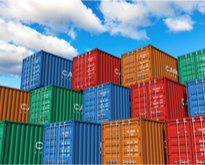
In 2018 imports of raw materials increased to €82 billion and exports reached €51 billion, resulting in a trade in goods deficit of €31 billion.
A trade deficit in raw materials has been recorded since 2002. Both imports and exports dropped in 2009 and then quickly recovered. Imports peaked in 2011 at €85 billion and exports reached a high point a year later at €48 billion. After these peaks there was a steady decline until 2016 when imports were €68 billion and exports €42 billion.
The source data are here.
The raw materials referred to in these trade statistics are those defined in sections 2 and 4 of the Standard International Trade Classification (SITC) and include oilseeds, cork, wood, pulp, textile fibres, ores and other minerals, as well as animal and vegetable oils.
Trade in raw materials is important for the sustainability of European countries and their economies. Construction, chemicals, the automotive and aerospace industries, machinery and equipment are some of the sectors that are most dependent on access to raw materials.
For more information:
- Statistics Explained article on international trade in raw materials
- Overview of international trade in goods.
To contact us: estat-user-support@ec.europa.eu

